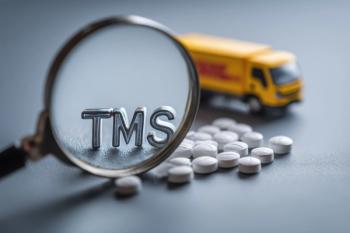
- Psychiatric Times Vol 36, Issue 6
- Volume 36
- Issue 6
The Medical Irony of the Deadly Opioid Epidemic
Our job as clinicians, our privilege, is to help our patients stay alive until they can engage and benefit from good treatment.
BRIEF COMMUNICATION
Dr Sederer is Adjunct Professor, Department of Epidemiology, Columbia University Mailman School of Public Health, Distinguished Psychiatrist Advisor to the New York State Office of Mental Health (OMH), and Director, Columbia Psychiatry Media.
My goal in this article is to persuade you, doctors and nurses who have prescribing authority, to save lives by prescribing an opioid drug for the opioid epidemic-namely buprenorphine. Including those practicing psychiatry, primary care, neurology, pain medicine, and so on. While you are at it, don’t miss the chance to help your patients (and their families) obtain the opioid reversal drug, naloxone.
The irony here is that prescribing (or assisting in dispensing) these (often highly stigmatized) drugs will forestall more drug deaths in the next few years than anything else doctors can do. Not a week passes where I do not meet grieving family members who have lost a loved one to a drug overdose, some still recently in its wake, the others who can never forget. Their loved one, or friend, had been smoking, vaping, or injecting heroin (they are beyond pills) or its synthetic close relative OxyContin. Dealers now increasingly lace whatever they are selling with fentanyl. Laboratory synthesized (often in China), this opioid is 50 times more powerful than heroin, 100 times more powerful than morphine. The potency of the opioid was beyond the drug dependent person’s tolerance: first they experienced respiratory distress and then followed an abrupt cessation of breathing.
These are preventable deaths. Despite reductions in medical prescribing of opioids (eg, OxyContin, Vicodin, Percodan), overdose deaths in the US continue to rise. Opioid overdoses annually eclipse motor vehicle deaths and now dwarf the loss of lives from the entire HIV/AIDS epidemic as well as the Vietnam War.
Today’s
Pain is ubiquitous. Everyone’s body feels it. For some it becomes chronic, potentially disabling. But there is more to this epidemic than arthritic joints, broken bones, tumors, and other dolorous conditions. We now recognize what we call the social determinants of physical, mental, and addictive illnesses. These include unemployment, poverty, housing instability, trauma, and domestic and neighborhood violence. You probably have heard the term, “deaths by despair”? These are deaths from suicide, drug overdoses, and the long-term complications of alcoholism and other addictions. We doctors are in a position to keep people alive until there are prospects for their future (and that of their children), safety, or opportunity to find purpose-until they can enter recovery and rebuild what addiction eroded.
Buprenorphine (Suboxone and others) is an opioid agonist, which means it fills the mu (opioid) brain receptor, impeding another opioid from attaching. Moreover, buprenorphine has a “ceiling effect”-its capacity to produce intoxication and narcosis is limited, unlike other opioids where the more someone takes, the higher they get, until they stop breathing. In effect, this medication provides a safe substitute for a deadly street opioid, while quelling drug cravings. There is no need, as well, to steal, deal, or prostitute oneself to obtain a drug supply, as is the case for all illegally trafficked substances.
Opioid overdoses, too many fatal, are dramatically reduced once someone begins buprenorphine. Doctors and nurses, please take heed. This is a life-saving medication that needs you to prescribe it.
I do not mean to suggest that medications alone are the answer to the opioid epidemic raging in this country. Complex problems call for comprehensive solutions, including motivational enhancement (readiness for change), 12-step recovery, cognitive therapy, family education and support, and taking care with what we eat and how we sleep, mindfulness and meditation, and finding people who can help rather than harm you.
Our job as clinicians, our privilege, is to help our patients stay alive until they can engage in and benefit from good treatment, and, in time, recover a life of relationships, contribution, purpose, and meaning. The doctor’s (or nurse’s) prescription pad is the most immediate and effective way to do so. We may have contributed, unintentionally, to the opioid epidemic, but we can, intentionally, help to remedy it.
Dr Sederer’s most recent book,
This article was originally published 5/15/2019 and has since been updated.
Disclosures:
The author reports no conflicts of interest concerning the subject matter of this article.
Articles in this issue
over 6 years ago
Overcoming Treatment Resistance: Can Pharmacogenetics Help?over 6 years ago
Treating Patients With Comorbid Anxiety and Diabetes Mellitusover 6 years ago
Chatbots: What Are They and Why Care?over 6 years ago
The FDA on ECT: Supporting a Vital Treatmentover 6 years ago
Serial Pleasuresover 6 years ago
Strategies to Facilitate a Positive Clinical Encounterover 6 years ago
Medication-Assisted Treatment on a Budget: Two You Should KnowNewsletter
Receive trusted psychiatric news, expert analysis, and clinical insights — subscribe today to support your practice and your patients.














